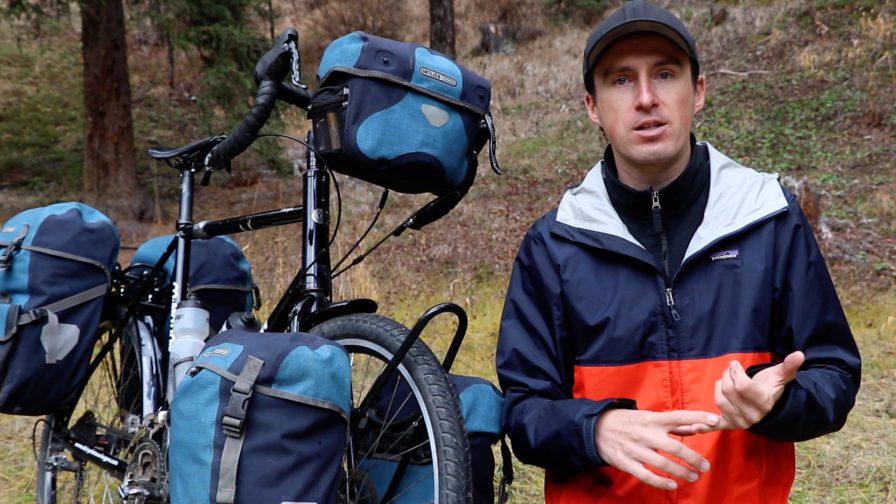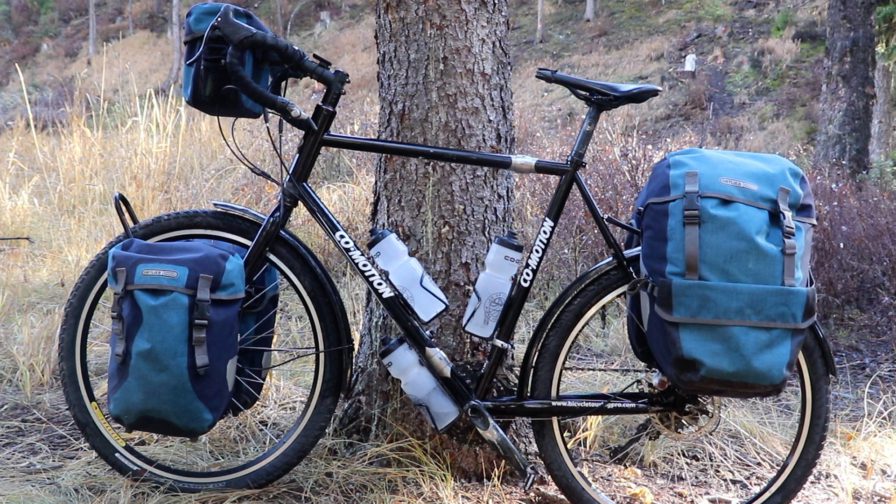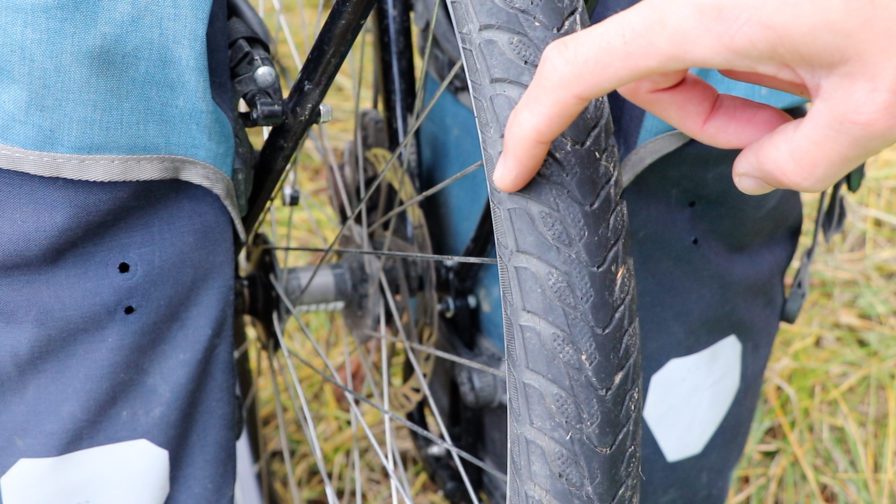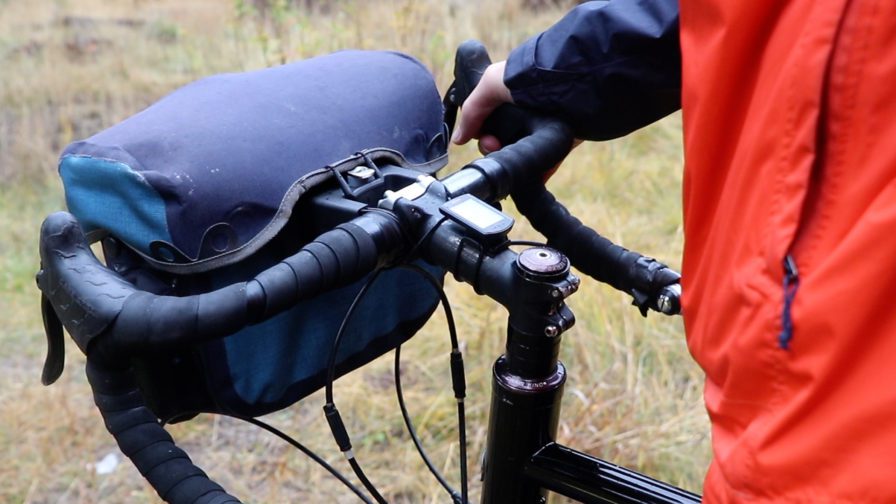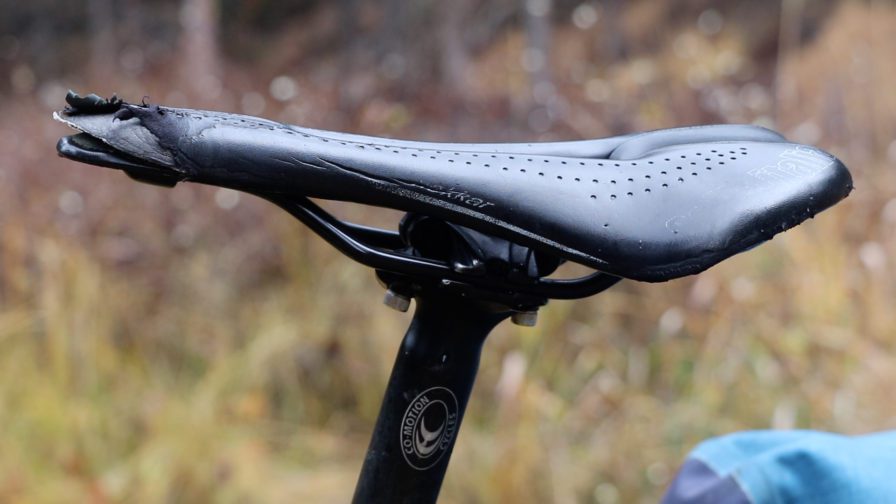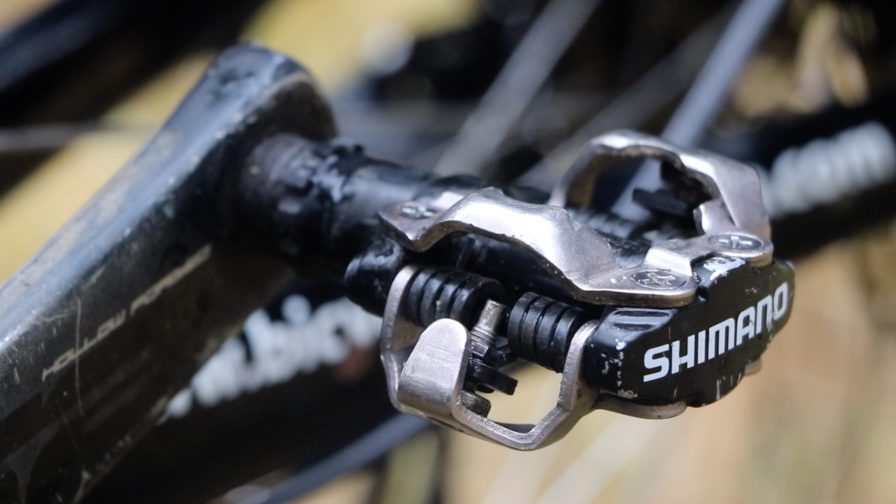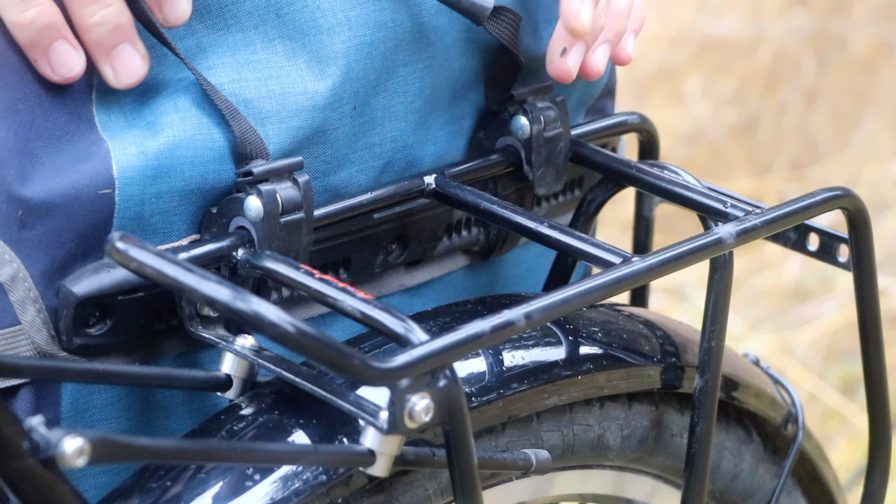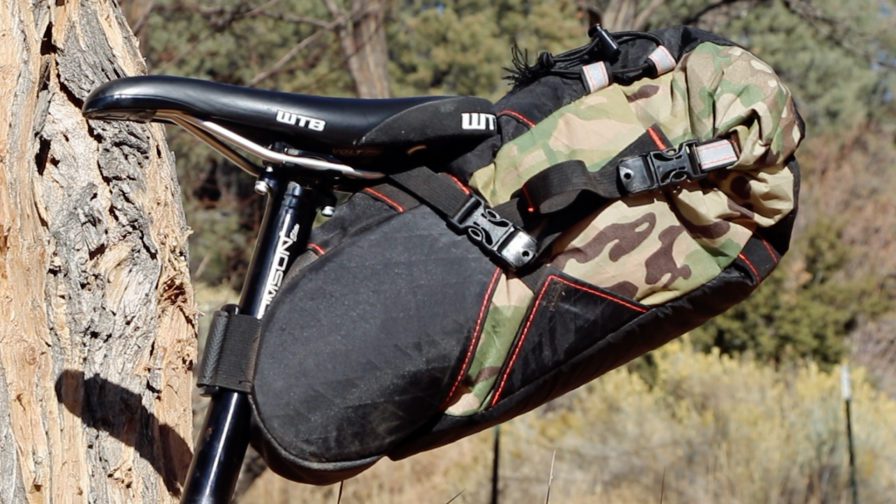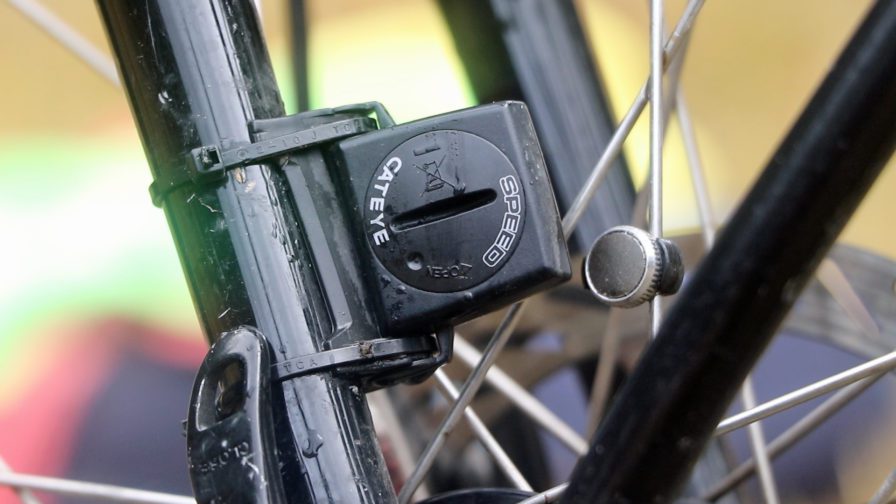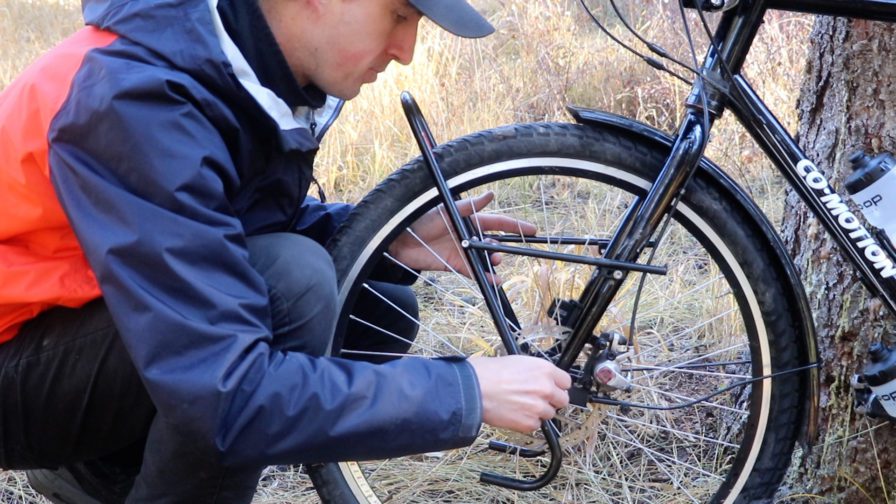Your First Touring Bicycle – Video Course
Welcome to the Your First Touring Bicycle video course! The information you find here has been designed to help you learn what a touring bicycle is, determine which type of touring bicycle is going to be best for you, and equip you with the information you need to go out and purchase a touring bicycle and all the extra parts and pieces you are going to need to conduct your first multi-day bicycle touring adventure.
1 – Introduction To Touring Bicycles
The goal of this course is to educate you so that you can go out on your own and purchase the best type of bicycle for your specific needs; so you don’t waste your money purchasing a bicycle that isn’t suited for the type of cycling you ultimately wish to conduct; and so that, in the end, you have a touring bicycle that you can use to conduct your own incredible bicycle touring adventures anywhere in the world.
Watch the Video2 – The Best Kind Of Touring Bicycle
Before you can even begin to look for your ideal touring bicycle, you first need to understand the different types of bicycles tours – as the type of touring bicycle that is going to be best for you is going to be very much determined by the type of bicycle touring that you wish to conduct.
Watch the Video3 – Frame Materials
The frame of your bicycle is the backbone of your machine. The components (i.e. derailleurs, shifters, brakes, etc.) can be changed and upgraded over time, but a weak, heavy or uncomfortably stiff frame will remain with you no matter what. Because of the weight that touring bikes need to carry and the amount of time you will spend on the bike while traveling, the material used in making the frame of your touring bicycle is extremely important.
Watch the Video4 – Wheels, Tires & Tubes
In much the same way that there are different types of metals used in touring bicycle frames, there are also different types of wheels, tires and tubes used on the various types of touring bicycles. What you will tend to see is that touring bicycles of different types generally use the same or similar size wheels and tires. So, you want to make sure that the wheels on your touring bicycle fit the type of bicycle touring you wish to be conducting.
Watch the Video5 – Handlebars & Shifters
Your handlebars are not only the tool you use to steer your bicycle, but they also function as one of three surfaces on which to support your body weight as you ride (the other two being your saddle and your pedals), in addition to being a convenient mounting place for your bicycle’s shifters, brake levers, lights, bell, cycling computer, GPS or other optional accessories.
Watch the Video6 – Gearing & Brakes
Once you begin looking at the touring bicycles being produced today, you will begin to notice that there are a number of different gear combinations and brake designs used on the various touring bike models. In this video we’ll discuss how to read and interpret the gearing on your new touring bicycle… and we’ll have a brief discussion on the two most common type of brakes found on touring bicycles.
Watch the Video7 – Saddles
Most (but not all) touring bicycles come equipped with a saddle (also called a “seat”). In this video we’ll discuss what to look for in the design of a high-quality (and comfortable) touring bicycle saddle… and we’ll discuss some of the things you can do if you discover that the saddle on your touring bicycle is causing you chafing, irritation or pain.
Watch the Video8 – Pedals & Shoes
The pedal is the part of a bicycle that you push with your feet in order to propel your bike forward. The pedal provides the connection with your bike between your foot and shoe, and is therefore one of the most important parts of your bicycle. While there are a number of different pedal types available, there are really only two different types of pedals that are popular in the touring bike world…
Watch the Video9 – Racks & Panniers
A traditional touring bicycle carries most of its clothing, gear, food and equipment in a set of panniers, which attach to the bicycle with the use of either front and/or rear racks. The benefit of bicycle panniers is that they are easy to pack, relatively easy to access on a daily basis, and they allow you to ride the bike in a normal way once you get used to the extra weight that you are carrying.
Watch the Video10 – Trailers
Another way you might choose to carry the gear you need for your bicycle tour is to transport that equipment with a trailer. A trailer is a large, one or two wheeled device that you pull behind your bicycle – and the trailer usually attaches to your bicycle at the rear axle or from your seat post. Trails are a great option for individuals who are totally new to bicycle touring.
Watch the Video11 – Bikepacking Bags
While racks and panniers are the most popular method for carrying your food, gear and clothing on a road-based bike tour, bikepacking bags are an excellent choice for cyclists traveling off-road (or for those participating in fast and sporty touring trips on mostly road-based surfaces). Here’s a quick breakdown of the frame packs, seat packs, handlebar bags and accessory packs you might use in a bikepacking setup…
Watch the Video12 – Extra Parts & Accessories
Speaking of things you might need to add to your bicycle once you purchase it, now would be a good time to talk about some of the extra parts, items and accessories you may need to purchase for your touring bicycle before you’re ready to hit the road on your first big bicycle tour. In this video we’ll discuss water bottles, fenders, bike computers, kickstands and a whole lot more!
Watch the Video13 – Buying Your New Touring Bicycle
You might think that buying a new touring bicycle is as easy as going online and ordering the bike you want, but you’ll quickly discover that most touring bicycles can not be purchased in this way. In this video, you will be guided through the bike buying process – from beginning to end. This is a step-by-step breakdown for finding and buying a your ideal touring bicycle.
Watch the Video14 – Assembling Your Touring Bicycle
After you’ve purchased your new bicycle and all of the racks, panniers, fenders, water bottle cages and other accessories you plan to put on your touring bicycle, it’s time to assemble your new bike and transform it into a finished touring bicycle that you can use to conduct your own cycling adventures anywhere in the world. Here are the step-by-step instructions on exactly how you do that…
Watch the VideoWant to Learn More about Bicycle Touring?
After you’ve finished watching all 14 videos in this course, please refer to “The Essential Guide to Touring Bicycles” to find the best touring bicycle for you. It is extremely important that you read through the information in this book and look through the included database of current touring bicycles before you go out and purchase a bike of any kind.
After you’ve watched the videos on this page and read “The Essential Guide to Touring Bicycles,” I recommend you read “The Bicycle Touring Blueprint,” which is my detailed how-to book on how to conduct the bike tour of your dreams. This book has helped thousands of people from all around the world learn how to bike tour… and the information inside this text can help you too!
Finally, I recommend your watch the videos inside the Bicycle Touring Pro video training course to learn more about how to map out safe and enjoyable bicycle touring routes, pack and prepare for your first bike tour, navigate once you hit the road, secure safe and affordable lodging on your travels, plus a whole lot more! If you enjoyed this video course on touring bicycles, then you will love the Bicycle Touring Pro video training course.
Learn How To Bike Tour Watch My How-To Videos
Got questions or need 1-on-1 assistance finding your ideal touring bicycle?
Sign up here for a private coaching call with the Bicycle Touring Pro and get your questions answered straight away!

